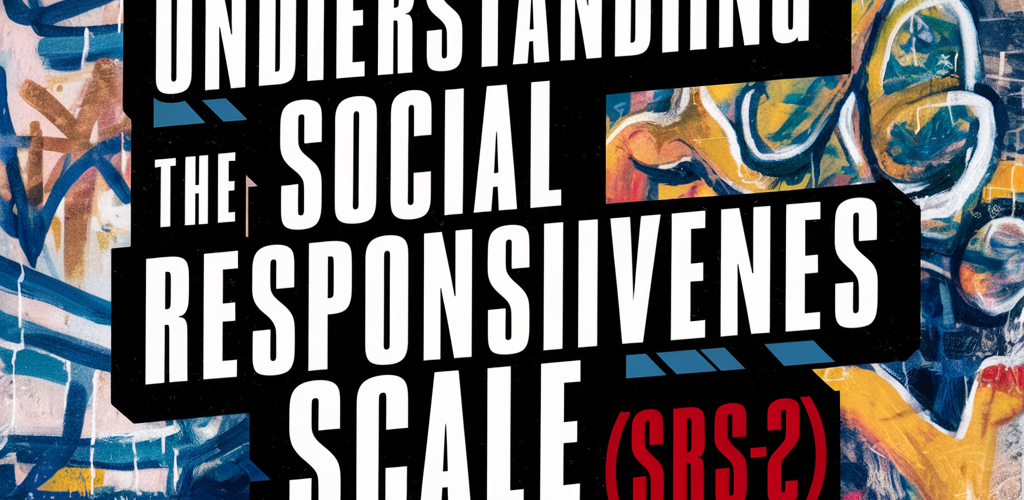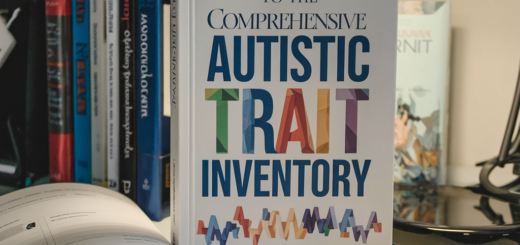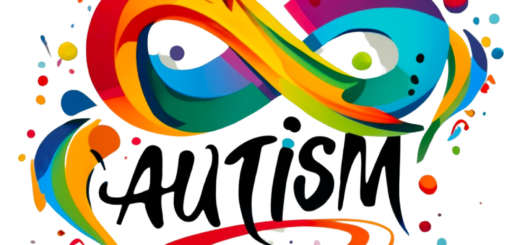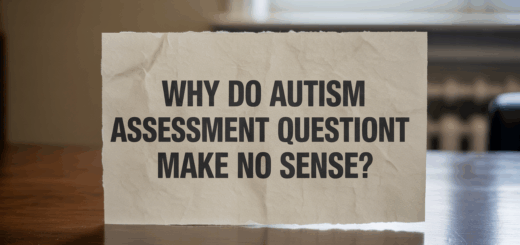Understanding the Social Responsiveness Scale (SRS-2)

- TL;DR: The Social Responsiveness Scale (SRS-2)
- Key Points About SRS-2:
- What is the SRS-2 Used For?
- The assessment can be used for:
- SRS-2 Scoring and Interpretation
- There are five Treatment Subscales:
- Age-Specific Norms
- Getting the SRS-2
- Reliability and Validity
- Clinical Applications
- SRS-2 Limitations
- Accessing the SRS-2
- Cross-Cultural Applications
- Using the SRS-2 Across Age Ranges
- Limitations in the Severe Range
- Research Applications
- SRS-2 Subscales
- SRS-2 Screening Procedures
- Complementary Measures
- SRS-2 Training and Professional Requirements
- Ethical Considerations
- Frequently Asked Questions About the SRS-2
- Updates and Revisions
TL;DR: The Social Responsiveness Scale (SRS-2)
The Social Responsiveness Scale, Second Edition (SRS-2) is a widely-used questionnaire designed to measure the severity of social impairment related to Autism Spectrum Disorder (ASD). It helps clinicians and researchers assess social behavior and can differentiate ASD symptoms from other conditions.
Think of it as a standardized way for parents, teachers, or even adults themselves (via a self-report form) to rate an individual’s social functioning in everyday situations. It covers ages from 2.5 years through adulthood.
Key Points About SRS-2:
- Purpose: Quantifies social deficits and helps identify ASD characteristics. It measures social awareness, cognition, communication, motivation, and restricted interests/repetitive behaviors.
- Format: A 65-item rating scale, typically completed in 15-20 minutes.
- Usefulness: Aids in screening, diagnosis (as part of a comprehensive assessment), intervention planning, and tracking progress. It’s sensitive to even subtle social impairments.
- Scores: Provides a total score and subscale scores, which are compared to normative data to understand the severity of social challenges.
- Important Note: The SRS-2 is a valuable tool but is not typically used as a sole diagnostic instrument; it contributes to a broader clinical evaluation.
The Social Responsiveness Scale, Second Edition (SRS-2) is a 65-item rating scale. It measures the severity of autism spectrum symptoms in individuals aged 2.5 years through adulthood. It is one of the most widely used autism screening tools by psychologists, educators, and researchers.
What is the SRS-2 Used For?
The SRS-2 quantitatively measures an individual’s social impairment within the autism spectrum. It identifies social skill deficits in critical areas such as social awareness, information processing, and capacity for reciprocal social responses. The assessment also covers social anxiety. It considers characteristics like stereotypical behaviors and restricted interests.
The assessment can be used for:
- Screening for the presence of social impairment associated with autism spectrum disorders
- Identifying specific areas of social deficits to target for treatment
- Monitoring an individual’s response to intervention over time
- Determining appropriate educational or treatment planning
- Evaluating broader autism symptoms beyond social deficits
SRS-2 Scoring and Interpretation
The SRS-2 consists of 65 items. These items are rated on a 4-point Likert scale. A parent/caregiver and teacher familiar with the individual’s current social functioning complete the ratings.
There are five Treatment Subscales:
- Social Awareness
- Social Cognition
- Social Communication
- Social Motivation
- Restricted Interests & Repetitive Behavior
The SRS-2 yields a Total Score that reflects the overall severity of social deficits. Scores of 60 or higher are considered in the Mild to severe range. Scores below 59 are considered in the normal range.
Age-Specific Norms
The SRS-2 has separate scoring norms for different age groups:
- 2.5 – 4.11 years
- 5 – 7.11 years
- 8 – 12.11 years
- 13 – 21.11 years
- 22+ years
Getting the SRS-2
The SRS-2 questionnaire forms, manual, scoring programs, and interpretive reports are only available for purchase from Western Psychological Services (WPS). An AutoScore software program is also offered to automatically score completed questionnaires.
The SRS-2 is useful for screening autism. It also measures treatment response over time. This is thanks to its excellent psychometric properties and multi-rater forms. However, it should be used in conjunction with other clinical evaluations as part of a comprehensive assessment process.
Reliability and Validity
The SRS-2 has solid psychometric properties, making it a reliable and valid instrument for assessing autism spectrum symptoms. Internal consistency is high across gender, age, and rater groups (α = 0.95).
Test-retest reliability over several months is also high (r=0.88 for combined samples). The SRS-2 scores show good convergent validity with other autism diagnostic measures. These include the Autism Diagnostic Interview-Revised (ADI-R) and clinical diagnosis of autism spectrum disorder.
Clinical Applications
The SRS-2 should not be used as the sole screening instrument. However, it provides valuable quantitative data. This data aids in assessing, diagnosing, and monitoring treatment response over time for individuals with autism spectrum conditions.
The multi-rater format allows clinicians to compare parent, teacher, and self-ratings. This comparison helps to comprehensively understand the individual’s reciprocal social behavior across different settings.
Clinicians can interpret subscale scores to identify specific areas of social deficits to target skills training and intervention planning. Progress monitoring with repeated SRS-2 administrations can track changes in social responsiveness due to treatment.
SRS-2 Limitations
Some critical limitations of the SRS-2 to be aware of include:
- Based solely on observer ratings rather than direct observation
- May under-identify social motivation deficits in higher-functioning individuals
- Norms derived from a general population sample rather than an autism sample
- It is not diagnostic by itself but meant for screening/describing symptoms
Despite these limitations, the SRS-2 remains a valid, standardized tool alongside other clinical data sources and evaluations.
Accessing the SRS-2
As noted earlier, the SRS-2 rating forms, manuals, scoring software, and related materials must be purchased directly from the Western Psychological Services website or approved distributors. Proper training in administration, scoring, and interpretation is required.
Purchasing the SRS-2 is expensive. However, its structured format offers a wealth of comparison data. This makes it a valuable addition to an autism clinical assessment battery. The quantitative nature of SRS-2 scores can aid in eligibility determinations, treatment planning, and tracking progress over time.
Cross-Cultural Applications
The SRS-2 has been translated and validated in several languages and cultures worldwide. Cross-cultural research has examined the SRS’s psychometric properties and norms in countries such as:
- The Netherlands
- Japan
- China
- South Korea
- Germany
- Israel
- Spain
- Italy
Minor adjustments may be needed to account for cultural differences in social norms. Overall, the SRS-2 has demonstrated solid reliability and validity across diverse cultures and languages. This allows for more standardized screening and assessment of autism spectrum conditions internationally.
Using the SRS-2 Across Age Ranges
One of the strengths of the SRS-2 is its usefulness across a vast age span from 2.5 years old through adulthood. The different age-based norms allow for appropriate interpretation at various developmental stages.
For very young children (2.5-4 years), the SRS-2 can aid in the early identification of emerging social deficits before a complete autism evaluation. Monitoring social responsiveness during the preschool years is valuable.
The SRS-2 can highlight areas for social skills training and educational assistance in school-age children and adolescents. Parent and teacher raters provide unique perspectives.
For adults, the SRS-2 self-report can identify personal social challenges. Other raters assess social functioning across different contexts like work, relationships, and independent living.
Limitations in the Severe Range
It’s important to note that the SRS-2 may have limitations. It may not clearly differentiate among individuals with more severe autism symptoms and characteristics. The highest scoring range tends to show a plateau effect.
This means the SRS-2 is best utilized for identifying deficits in the mild to moderate autism spectrum range. Those with more severe impairments may reach the highest scoring thresholds, limiting the SRS-2’s ability to quantify the degree of deficit further.
For lower-functioning individuals, the SRS-2 should be used with other comprehensive autism assessments. Conduct direct behavioral observations across multiple contexts. Include interviews with caregivers and teachers to obtain a complete clinical picture.
Research Applications
Beyond its clinical utility, the SRS-2 is also frequently used as a measure in autism research studies. The standardized, quantitative nature of the scale allows researchers to:
- Characterize social phenotypes of different study samples
- Examine correlations between SRS scores and other variables of interest
- Track changes in social responsiveness in treatment studies
- Explore potential biomarkers or neurological underpinnings of autism
- Conduct genetic, neuroimaging, and longitudinal studies
Having a reliable, continuous measure of autism trait severity, like the SRS-2, can provide more statistical power in research. It is more effective than using a simple categorical diagnosis.
SRS-2 Subscales
While the SRS-2 Total Score is the most commonly used index, the subscale scores can also provide valuable information:
Social Awareness – Ability to pick up on social cues Social Cognition – Interpreting social situations Social Communication – Expressive social communication skills Social Motivation – Engaging in socially motivated behaviors Restricted Interests & Repetitive Behavior – Stereotypical mannerisms
Examining subscale profiles and patterns can pinpoint specific areas of relative strength and weakness, allowing for more targeted treatment planning.
SRS-2 Screening Procedures
For screening purposes in schools, clinics, or research studies, there are a few different pathways recommended based on the SRS-2 manual:
- Universal screening using Total score cut-off
- Universal screening using Subscale specific cut-offs
- Stratified screening by teacher/parent nomination first
The appropriate pathway depends on specific goals, available resources, and population characteristics. Proper screening procedures are essential for accurate identification.
Complementary Measures
While extremely useful, the SRS-2 is not meant to be used as the sole instrument for an autism evaluation. It works best when combined with other standard autism assessment tools, such as:
- Autism Diagnostic Observation Schedule (ADOS)
- Autism Diagnostic Interview-Revised (ADI-R)
- Clinical interviews and developmental history
- Cognitive/IQ testing
- Assessment of adaptive functioning skills
A multi-measure, multi-informant comprehensive assessment process is ideal for accurate autism identification and individualized treatment planning.
Overall, the SRS-2 is a crucial part of the diagnostic toolkit. It provides quantitative data on the quality of reciprocal social behavior. This is a core domain affected in autism spectrum disorders. Its strengths lie in standardization, psychometric rigor, sensitivity to change, and wide accessibility across ages, languages, and cultures.
SRS-2 Training and Professional Requirements
Proper training is required to correctly administer, score, and interpret the SRS-2. The Western Psychological Services (WPS) publisher provides training materials, scoring software, and guidance on using the instrument appropriately.
The SRS-2 manual outlines professional qualifications. It states that individuals with adequate training and experience working with the assessed population should complete the rater forms. This includes psychologists, physicians, educators, and other qualified professionals.
Scoring software allows for the entry of rater responses, calculation of total and subscale scores, and generation of score reports. WPS also offers scoring services, where completed forms can be submitted for expert scoring.
Professionals with formal training/expertise in psychological/psychoeducational assessment and autism spectrum disorders should interpret SRS-2 scores. Scores must be integrated with other sources of data from a comprehensive evaluation.
Ethical Considerations
As with any psychological assessment instrument, there are significant ethical principles and guidelines surrounding the use of the SRS-2:
- Maintain standardized administration procedures
- Ensure confidentiality of assessment results
- Interpret findings within the appropriate context of training/competence
- Use multiple data sources; do not rely solely on the SRS-2
- Provide an adequate explanation of results to parents/individuals evaluated
- Only use for intended purposes (screening, aid to diagnosis, treatment planning)
- Be aware of potential cultural/linguistic influences on rater responses.
Responsible administration, scoring, interpretation, and application of the SRS-2 in an ethical manner is crucial for upholding professional standards and guidelines.
Frequently Asked Questions About the SRS-2
Get answers to the most common questions about the Social Responsiveness Scale, Second Edition (SRS-2) assessment tool.
The SRS-2 stands for Social Responsiveness Scale, Second Edition. It’s a 65-item rating scale designed to measure the severity of autism spectrum symptoms in individuals aged 2.5 years through adulthood.
The SRS-2 is primarily used for:
- Screening for social impairment associated with autism spectrum disorders
- Identifying specific areas of social deficits for targeted treatment
- Monitoring response to intervention over time
- Supporting educational and treatment planning decisions
The SRS-2 uses a 4-point Likert scale rated by parents/caregivers and teachers familiar with the individual’s social functioning. The assessment provides:
- Total Score: Reflects overall severity of social deficits
- Five Treatment Subscales: Social Awareness, Social Cognition, Social Communication, Social Motivation, and Restricted Interests & Repetitive Behavior
• Scores of 60 or higher: Mild to severe range
• Scores below 59: Normal range
The SRS-2 requires qualified professionals with adequate training and experience working with the assessed population. This includes:
- Licensed psychologists
- Physicians specializing in developmental disorders
- Special education professionals
- Other qualified professionals with autism spectrum disorder expertise
Proper training in administration, scoring, and interpretation is required, and scoring should be integrated with other comprehensive evaluation data.
The SRS-2 has impressive age range coverage from 2.5 years through adulthood, with separate scoring norms for different age groups:
- 2.5 – 4.11 years (early identification)
- 5 – 7.11 years (preschool/early elementary)
- 8 – 12.11 years (elementary/middle school)
- 13 – 21.11 years (adolescent/young adult)
- 22+ years (adult)
This wide age range makes it valuable for tracking social development and intervention progress across the lifespan.
The SRS-2 assessment materials are exclusively available through Western Psychological Services (WPS). You cannot access the SRS-2 for free online.
Available materials include:
- Questionnaire forms and manual
- AutoScore software program for automatic scoring
- Scoring programs and interpretive reports
- Professional training materials
No, the SRS-2 cannot diagnose autism spectrum disorder by itself. It’s designed as a screening and assessment tool that should be used alongside other comprehensive evaluation methods.
For accurate autism identification, the SRS-2 works best when combined with:
- Autism Diagnostic Observation Schedule (ADOS)
- Autism Diagnostic Interview-Revised (ADI-R)
- Clinical interviews and developmental history
- Cognitive/IQ testing
- Assessment of adaptive functioning skills
A multi-measure, multi-informant comprehensive assessment process is ideal for proper diagnosis and treatment planning.
While the SRS-2 is a valuable assessment tool, it has several important limitations:
- Observer-based only: Relies solely on rater observations rather than direct behavioral observation
- Limited severe range differentiation: May show plateau effects for individuals with more severe autism symptoms
- General population norms: Norms derived from general population rather than autism-specific samples
- Screening tool: Not diagnostic by itself, meant for screening and describing symptoms
- Higher-functioning bias: May under-identify social motivation deficits in higher-functioning individuals
Yes, the SRS-2 has been translated and validated in several languages and has demonstrated solid reliability across diverse cultures. Countries with validated versions include:
- The Netherlands
- Japan and South Korea
- China
- Germany, Spain, and Italy
- Israel
While minor adjustments may be needed for cultural differences in social norms, the SRS-2 maintains strong psychometric properties internationally, allowing for more standardized autism screening worldwide.
The SRS-2 demonstrates excellent psychometric properties that make it a trusted assessment tool:
- Internal consistency: High across all groups (α = 0.95)
- Test-retest reliability: Strong over several months (r = 0.88)
- Convergent validity: Good correlation with other autism diagnostic measures like ADI-R
- Clinical validation: Aligns well with clinical autism spectrum disorder diagnoses
These strong psychometric properties support the SRS-2’s use in both clinical practice and research settings for reliable autism symptom measurement.
The frequency of SRS-2 administration for progress monitoring depends on several factors:
- Intervention intensity: More frequent assessment for intensive interventions
- Individual needs: Based on treatment goals and expected rate of change
- Clinical judgment: Professional determination of optimal timing
- Practical considerations: Available resources and assessment burden
The SRS-2’s sensitivity to change makes it particularly valuable for tracking intervention effectiveness over time.
Updates and Revisions
The Social Responsiveness Scale was initially published in 2005, and the revised SRS-2 version was released in 2012. Periodic reviews and revisions help maintain and improve the instrument’s efficacy.
Some potential areas for future SRS revisions could include:
- Continued cross-cultural/linguistic translation and norming
- Expanding upper/lower age range norms
- Updating item content based on current diagnostic criteria
- Examining the need for separate norms based on gender, age cohorts, etc.
- Shortening length/increasing efficiency while maintaining psychometrics
- Developing complementary observation-based versions
- Utilizing advanced psychometric techniques like item response theory
Professional assessment tools require ongoing research and development to ensure they remain maximally accurate, inclusive, and aligned with current science and clinical practice. The SRS-2 will likely evolve over future editions.
Overall, the Social Responsiveness Scale is vital in assessing, diagnosing, and treating autism spectrum conditions. When used responsibly by qualified professionals and integrated with other data sources, it provides a standardized, quantitative way to measure and track core autism characteristics over time. As both a clinical tool and a research instrument, the SRS-2 will remain essential for understanding and serving individuals on the autism spectrum.



5 Responses
[…] Social Responsiveness Scale, Second Edition (SRS-2) is a 65-item rating scale used to measure the severity of autism spectrum disorder (ASD) symptoms […]
[…] out our deep dive on Understanding SRS-2 Assessment for complementary […]
[…] Progress:Regularly reassess using the SRS-2 to track changes in scores over time. This helps evaluate the effectiveness of interventions and […]
[…] Overview of the forms, structure, and what it measures:https://101autism.com/understanding-the-social-responsiveness-scale-srs-2/ […]
[…] about past social failures. Autistic individuals may have experienced these more frequently due to social communication differences. Recalling embarrassing moments can trigger genuine distress. This is particularly true if those […]